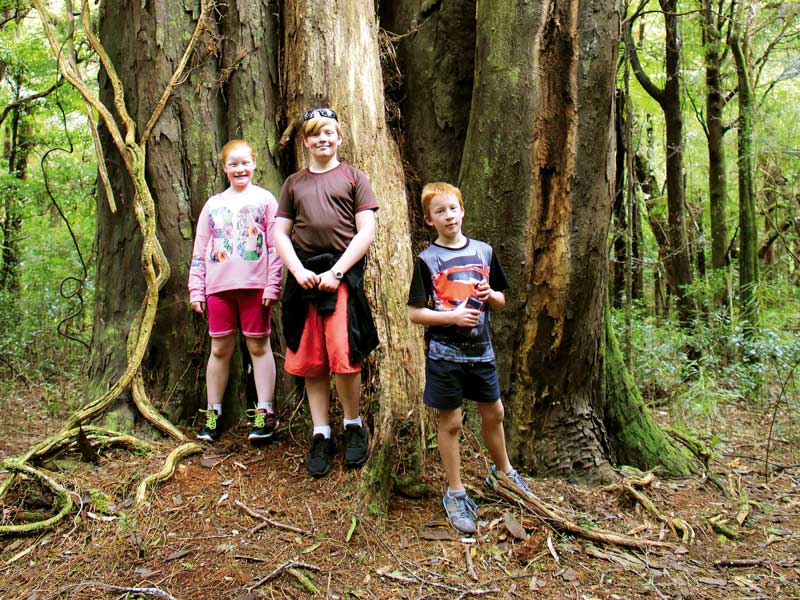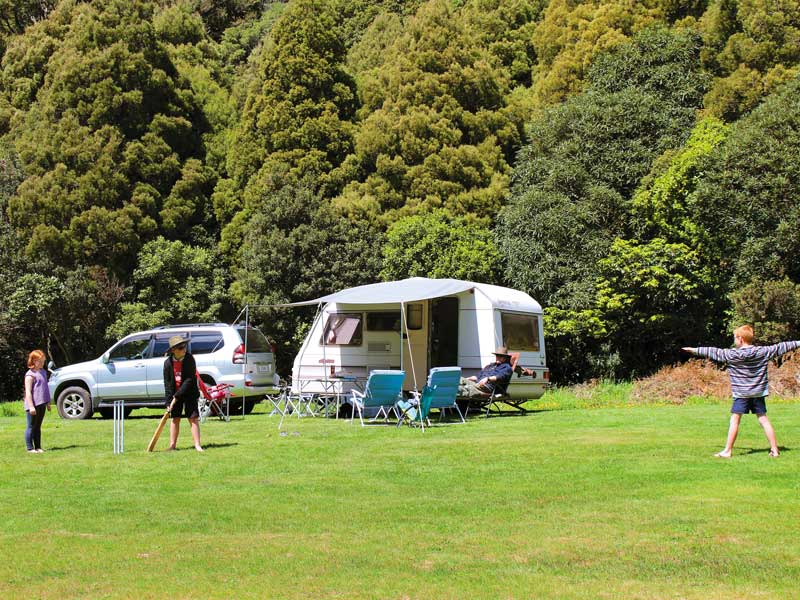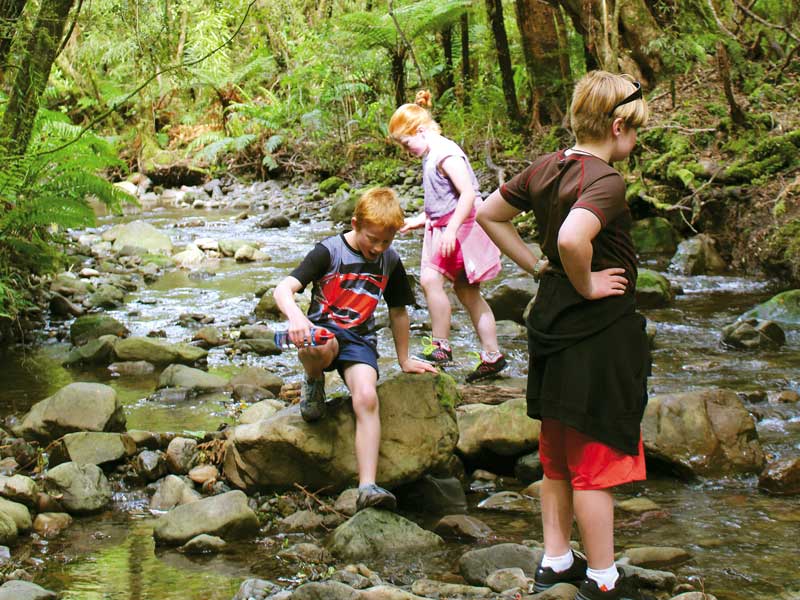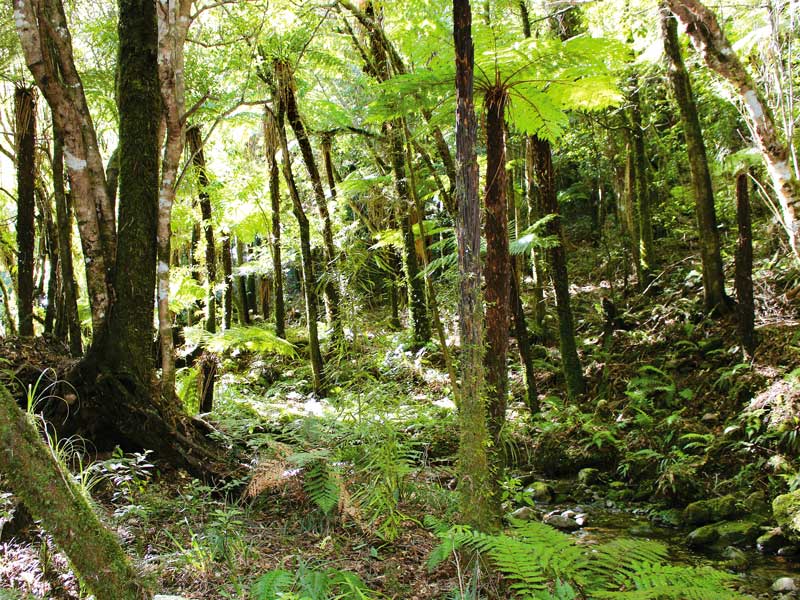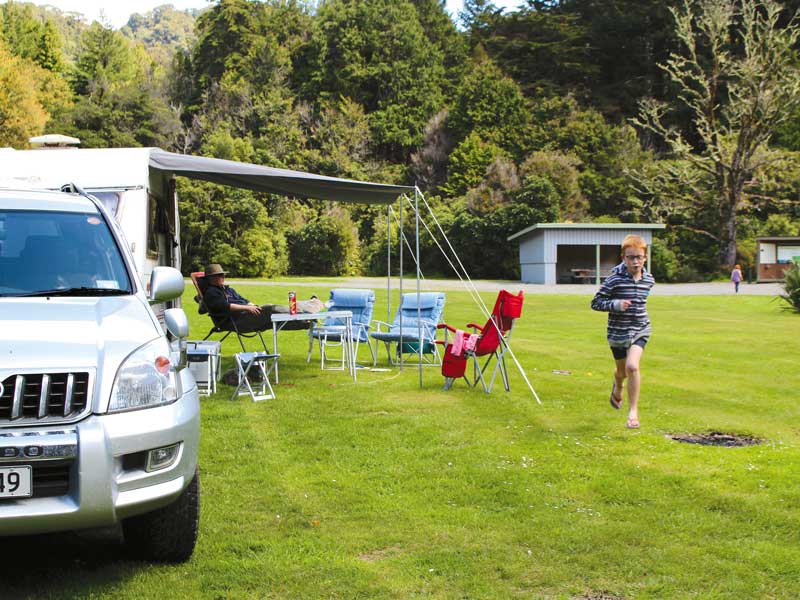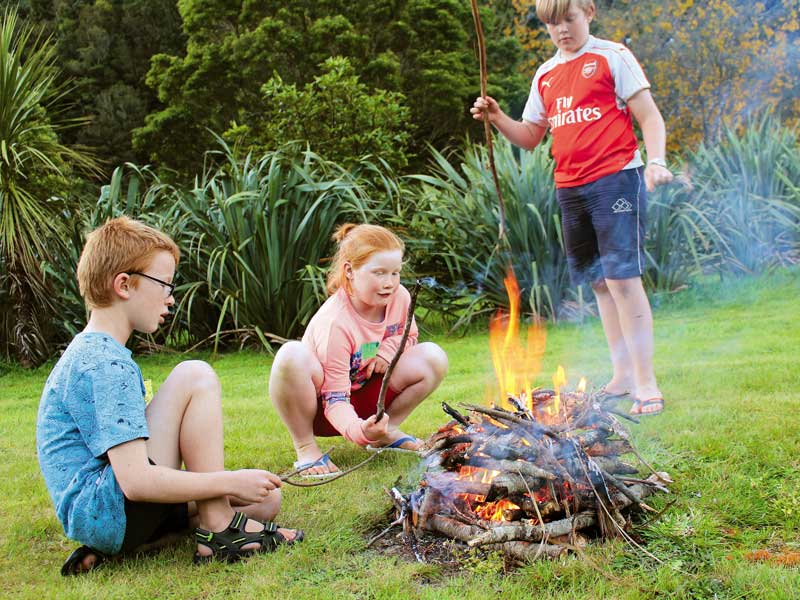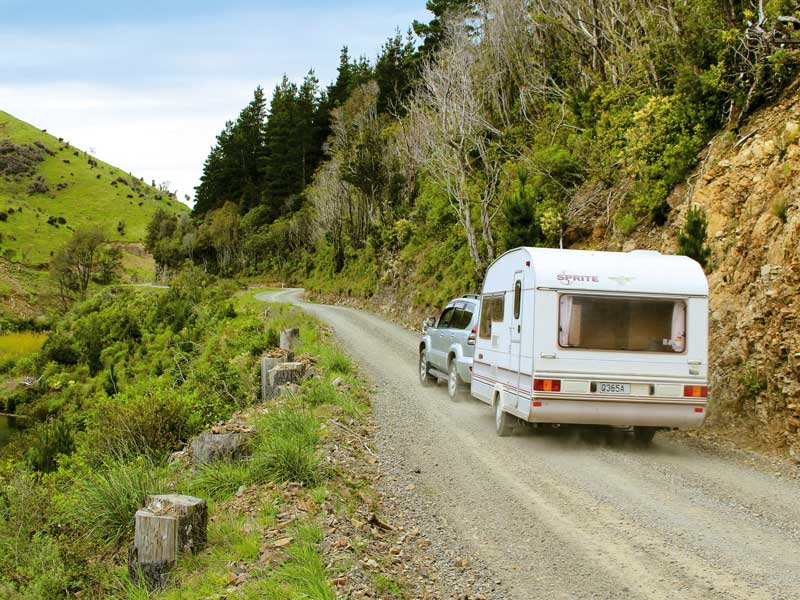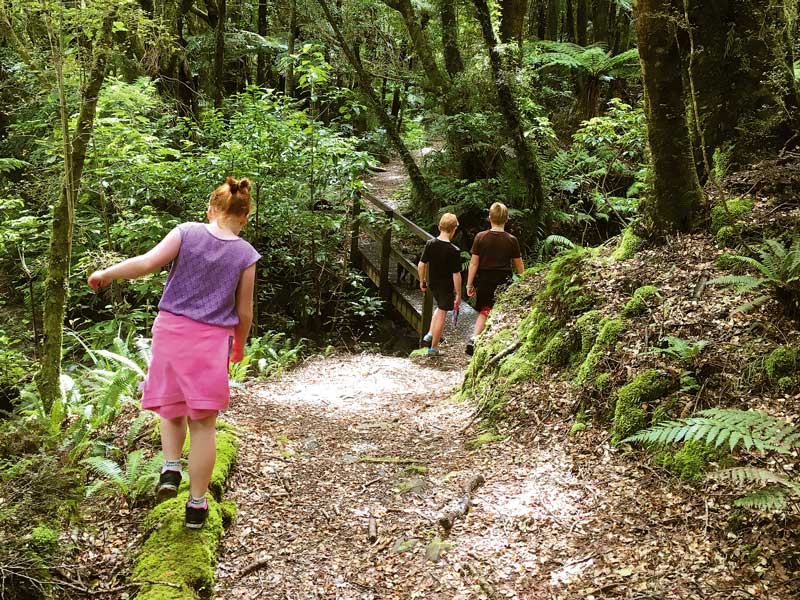I’ve wanted to visit Kiriwhakapapa (I love the way the name flows off the tongue when pronounced correctly) near Masterton for a while now, but previous plans have been thwarted due to heavy rain. Yes, despite the caravan, I’m still a fine weather camper at heart! But thanks to the perfect combination of a long weekend and fine spring weather, we finally managed to visit this beautiful spot.
AN ATTRACTIVE, WELCOMING CAMPSITE
This gorgeous family campsite includes 15 camping spots divided into two parts by a lovely flax hedge. We were easily able to park in the corner of one of these areas with a large grassy stretch out front for cricket and soccer playoffs. And being a dog-friendly campsite, we enjoyed being able to take Jed, our miniature schnauzer, along on holiday.
Back in the 1930s, the area was extensively logged for rimu and other native podocarps. At that time, a grove of redwood trees was also planted and now stands tall and proud close to the campsite. Although I am a devoted fan of our beautiful native forests, there is something about the tall straight trunks of the redwood that make them truly majestic.
WALKS TO ENJOY
Nestled on the edge of the forest park, there are several walks and tramps that start from the campsite. After setting ourselves up and soaking up the sunshine for a while, we headed off to do the one-hour Kiriwhakapapa Loop track.
We started the walk by taking a right over a small bridge spanning the stream and into the redwood grove. A little further along, the track enters the denser native bush with a multitude of tree ferns and regenerating forest. It sidled fairly gradually up a slope onto a small spur before dropping down the other side, across the stream again, and to a T intersection. Here, it meets the old bush tramline that continues through to the Mikimiki Valley and on to the Blue Range Hut (around two to three hours). But we headed back towards the campsite, completing the loop which took an easy hour all up, with lots of photo stops.
KICKING BACK IN NATURE
Later that evening, having checked there were no local fire bans, the kids helped their dad build an impressive firestack, and we all enjoyed the crackling warmth as darkness fell and the evening cooled significantly.
Night time was perfect to explore the nearby stream. There was much excitement at the discovery of a group of eels, including a large longfin eel. Longfin eels are one of the largest eels in the world—growing up to two metres long—and are only found in New Zealand.
MORE TRAMPING OPPORTUNITIES
After a solid night’s sleep in the caravan, we were ready to go bush again the next morning. Feeling the need for a bit of a stretch out and exercise, my husband Andrew decided to climb up to the Blue Range Hut. By all accounts, it was a fairly steep climb and coming down was a bit hard on the knees, but it met his objective of getting the heart rate up.
The kids and I chose a cruisier walk and explored further along the tramline track. While there is no evidence of the old tramline left, the track is well maintained and wide. In fact, it looked like it would be a fantastic mountain bike ride. We discovered large podocarps that had escaped the early logging efforts, and on the way back decided to do the loop track in the opposite direction.
Lunch and another relaxed afternoon passed by. There were other children around to play hide and seek and a game of touch with and we had a kids versus parent’s soccer match. Thankfully, only minor injuries were incurred!
Nothing like sunny days in the great outdoors to lift the spirits and truly relax.


